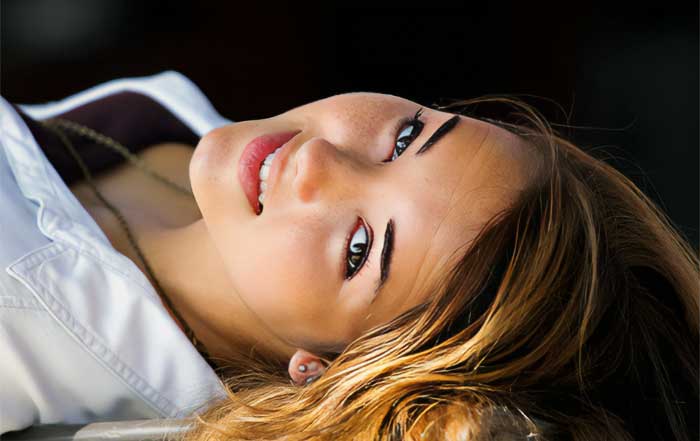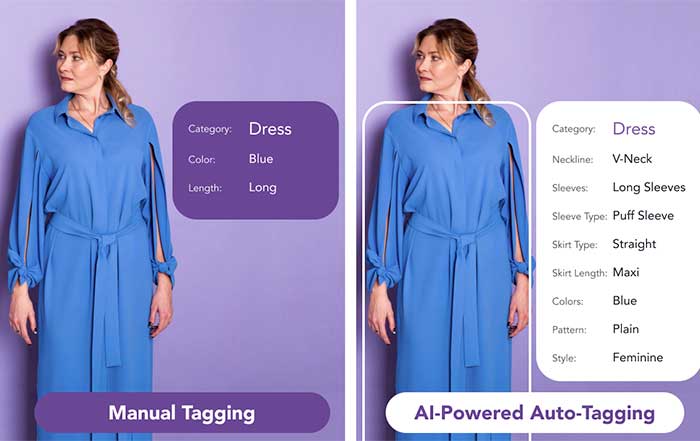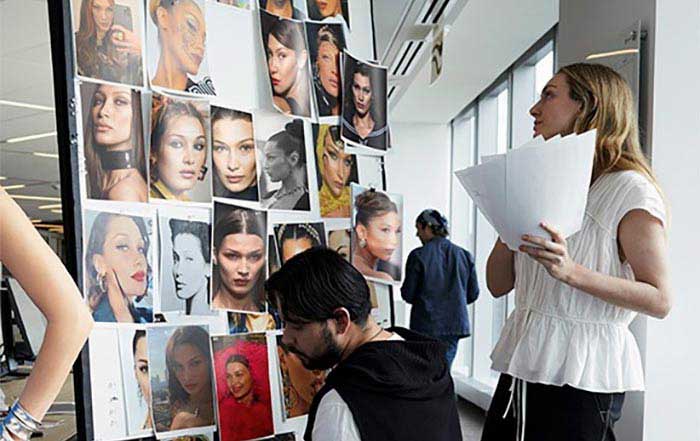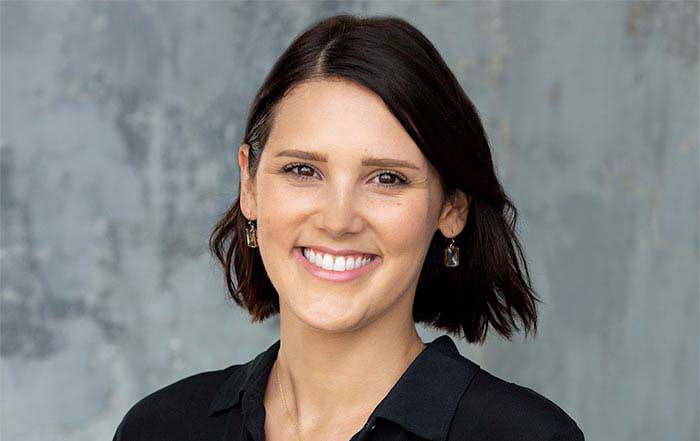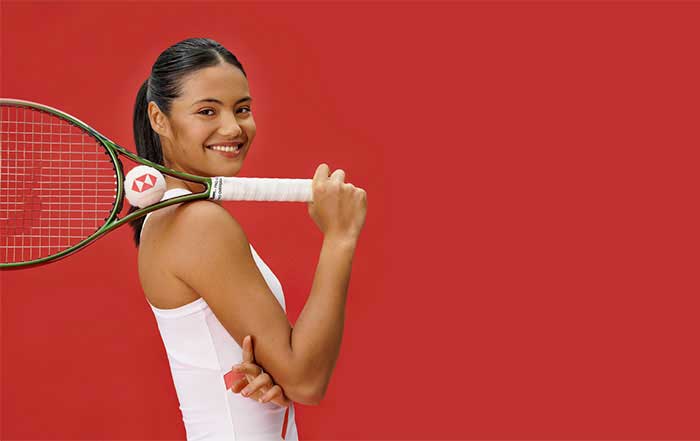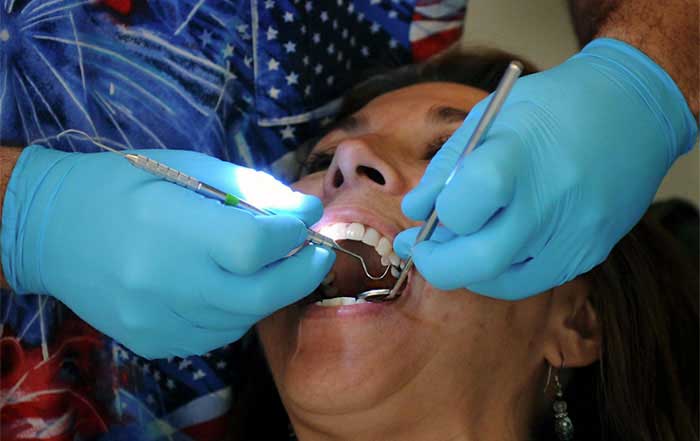Throughout history, the allure of youth has been deeply intertwined with beauty, vitality, and confidence. For women, especially in the modern era, the pursuit of enduring youthfulness has evolved from superficial beauty practices to a holistic approach that integrates science, wellness, lifestyle, and empowerment. Discussions about women and youth are no longer limited to creams and cosmetic procedures; instead, they encompass nutrition, mindfulness, leadership, and even social structures that support longer, healthier lives. On platforms like herstage.com, where conversations about women, lifestyle, and leadership thrive, the question of how women can sustain vibrancy and vitality is central to empowering narratives.
This article examines the multidimensional secrets behind women’s enduring youthfulness, combining medical expertise, cultural traditions, technological innovations, and lifestyle strategies. It also explores how youthfulness transcends appearances, reflecting resilience, adaptability, and confidence in an ever-changing world.
The Science of Aging and Longevity
Biological Factors
Enduring youthfulness begins with understanding the biological processes that drive aging. Genetics play a significant role, but modern science has uncovered that epigenetics, diet, and lifestyle factors often outweigh predetermined genetic outcomes. Studies by organizations such as the World Health Organization (WHO) highlight how global life expectancy continues to rise, with women consistently outliving men across most regions. However, longevity without vitality is not the goal; instead, it is about maintaining strength, energy, and cognitive sharpness.
Advancements in medical research show that cellular aging is influenced by oxidative stress, mitochondrial decline, and shortened telomeres. Scientists at Harvard Medical School have studied how interventions such as calorie restriction, intermittent fasting, and certain plant-based compounds may slow cellular aging. Women adopting these methods often report not just youthful appearances but also enhanced clarity and stamina.
Hormonal Balance and Women’s Health
Hormones are central to female youthfulness, influencing skin elasticity, mood regulation, bone density, and metabolism. As women age, fluctuations in estrogen, progesterone, and testosterone affect vitality. By 2025, hormone replacement therapies have become more precise, with personalized regimens designed through genetic testing and digital health platforms like Mayo Clinic resources.
Equally important are natural approaches. Diets rich in phytoestrogens from soy, flaxseed, and legumes can support hormonal balance. Practices like yoga and meditation also regulate cortisol levels, reducing stress-induced premature aging. This alignment of natural rhythms with modern medicine offers women more autonomy in sustaining long-term health.
Nutrition as the Foundation of Youth
The Role of Diet in Longevity
Nutrition is perhaps the most influential factor in maintaining youth. Global research points to the Mediterranean diet, abundant in fresh vegetables, olive oil, whole grains, and lean proteins, as one of the healthiest patterns linked to longevity. Countries such as Italy, Spain, and Greece continue to exemplify lifestyles where diet contributes to both wellness and social enjoyment.
In Asia, diets rich in green tea, fermented foods like kimchi and miso, and fish high in omega-3s are associated with lower rates of chronic illness. In Japan, where women enjoy some of the highest life expectancies in the world, balanced meals emphasizing smaller portions and plant-based ingredients play a significant role. Readers of herstage.com/food will recognize how culinary choices influence not only health but also cultural identity and lifestyle satisfaction.
Superfoods for Radiant Skin and Energy
Superfoods have gained prominence in beauty and wellness circles for their ability to protect against oxidative stress and inflammation. Berries, avocados, dark leafy greens, turmeric, and nuts feature prominently in youth-preserving diets. Nutritionists stress that collagen-supporting foods such as citrus fruits, bone broth, and leafy greens are vital for skin elasticity.
Supplements have also become mainstream. Collagen peptides, omega-3 fish oils, and vitamin D support not just skin but also cognitive and joint health. Modern women are increasingly consulting functional medicine specialists to design supplement routines tailored to their genetic profiles.
Fitness and Movement for Lifelong Vitality
Exercise as Medicine
Exercise remains the most consistent predictor of longevity and youthful energy. Whether in North America, Europe, or Asia, women embracing fitness are defying traditional age expectations. Strength training, once thought to be exclusively for younger individuals, is now recommended for women in midlife and beyond to preserve muscle mass and metabolic health.
Aerobic activities such as swimming, cycling, and walking support cardiovascular endurance, while yoga and Pilates offer flexibility and balance. Emerging fitness trends like high-intensity interval training (HIIT) continue to prove effective in boosting metabolism and combating fat accumulation. According to resources from the American Heart Association, women who engage in regular movement not only add years to their lives but also maintain higher quality of living.
Outdoor and Mindful Movement
The benefits of exercise are magnified when combined with nature and mindfulness. Practices like forest bathing in Japan, Nordic walking in Scandinavia, and outdoor yoga retreats in Bali are more than wellness trends; they connect women to the restorative power of nature.
This lifestyle integration echoes themes in herstage.com/health, where mental well-being is as essential as physical strength. Outdoor activity reduces stress, balances circadian rhythms, and provides vitamin D, which is crucial for bone and immune health.
🌟 Your Youth Vitality Assessment
Discover your personalized path to enduring youthfulness
Skincare and Beauty Innovations
Modern Dermatology and Anti-Aging Treatments
In 2025, the beauty industry is more advanced than ever, blending science with natural remedies. Clinique, Estée Lauder, and L’Oréal continue to dominate global skincare, but innovation is also coming from smaller biotech firms introducing personalized treatments based on DNA analysis.
Laser therapies, microneedling, and non-invasive facelifts are increasingly accessible. Meanwhile, topical products enriched with peptides, retinoids, and antioxidants remain staples in preventing wrinkles and pigmentation. The integration of artificial intelligence in beauty, through apps that analyze skin conditions and recommend routines, has made advanced care available to women worldwide.
Natural and Holistic Approaches
Despite the rise of technology, natural skincare remains in high demand. Oils like argan, jojoba, and rosehip, alongside botanical-based serums, continue to appeal to women who value minimalism and sustainability. Platforms like herstage.com/beauty often highlight stories of women blending traditional remedies with modern routines, showcasing the harmony between heritage and science.
As consumers demand more ethical products, companies are increasingly transparent about sourcing, cruelty-free testing, and environmental impact. Youthfulness, in this sense, also reflects conscious choices that align beauty with responsibility.
Mindset, Resilience, and Mental Health
Stress Management and Psychological Agility
Youthfulness is as much a state of mind as it is a reflection in the mirror. Chronic stress accelerates aging, but resilient women have cultivated techniques to manage pressures in both professional and personal domains. Mindfulness practices, therapy, journaling, and digital detoxes all contribute to mental clarity.
Psychologists emphasize neuroplasticity—the brain’s ability to rewire itself—as key to staying mentally young. Women who learn new languages, pursue education, or engage in artistic endeavors stimulate their cognitive resilience. The intersection of lifelong learning with emotional stability is celebrated in herstage.com/education, where empowerment through knowledge reflects inner youth.
The Role of Social Connections
Strong relationships and community ties are repeatedly shown to extend life expectancy and promote happiness. Whether through family, friendships, or professional networks, women who nurture meaningful connections sustain vitality well into later years. Harvard’s Study of Adult Development, one of the longest-running studies on health, affirms that social bonds are more predictive of longevity than wealth or fame.
Cultural traditions across Europe, Asia, and Africa reflect this truth. From Italian family gatherings around the dinner table to Singaporean intergenerational households, these connections cultivate purpose and belonging.
Lifestyle Choices and Global Inspirations that Preserve Youth
Youthfulness is not simply about avoiding wrinkles; it is about cultivating a lifestyle that enables women to remain vibrant, curious, and full of energy. Across the world, women who appear youthful into their later decades often embody daily habits that sustain both inner and outer well-being.
Adequate sleep, for instance, is one of the most underestimated aspects of youth preservation. Studies published by Harvard Medical School reveal that consistent, restorative sleep enhances skin repair, regulates hormonal balance, and sharpens memory. In a society where busyness is often glorified, women who prioritize sleep demonstrate not weakness but wisdom. Digital wellness tools now encourage healthier bedtime routines by minimizing screen time and promoting meditation before sleep, helping to combat insomnia triggered by stress and overexposure to technology.
Another key lifestyle factor is hydration. Drinking sufficient water, consuming hydrating foods such as cucumbers and melons, and limiting caffeine and alcohol contribute to smoother skin and better organ function. Coupled with moderate indulgence in coffee and wine—celebrated traditions in cultures such as Italy and France—this balance promotes both enjoyment and long-term health.
Readers of herstage.com/lifestyle resonate with these daily practices, seeing them as accessible pathways toward endurance rather than unattainable ideals.
The Role of Fashion and Self-Expression
Fashion has long been a vehicle of youthfulness, not because it disguises age, but because it allows women to express creativity and individuality. Style evolution reflects personal growth, and women who experiment with clothing, accessories, and beauty trends often project a youthful energy regardless of their biological age.
In 2025, sustainable fashion is central to this expression. Brands such as Stella McCartney and Patagonia are pioneering ethical production, allowing women to stay stylish while aligning with global sustainability goals. Conscious consumers increasingly look to platforms like Vogue for inspiration that blends glamour with responsibility.
On herstage.com/fashion, fashion is seen not merely as adornment but as empowerment. Women who wear clothing that makes them feel confident, comfortable, and expressive embody a youthfulness that transcends external trends.
Leadership, Confidence, and Enduring Influence
Professional Resilience
Enduring youthfulness is also reflected in the workplace, where women who maintain relevance, adaptability, and authority demonstrate vitality beyond appearances. Leaders such as Christine Lagarde of the European Central Bank or Indra Nooyi, former CEO of PepsiCo, embody a type of youthfulness rooted in dynamism and innovation. They demonstrate how staying curious, embracing new technologies, and mentoring younger generations keeps professional women intellectually and socially energized.
On herstage.com/leadership, readers find narratives of women who resist stagnation and continuously reinvent themselves. By embracing digital tools, engaging in lifelong learning, and cultivating collaborative leadership, women keep their professional identities fresh and forward-looking.
The Confidence Factor
Confidence itself is youthful. A woman who carries herself with assurance, regardless of whether she is 30 or 70, exudes vitality that draws others in. Confidence comes from accumulated experience, resilience through setbacks, and the courage to adapt. Research from the American Psychological Association underscores that self-efficacy is strongly linked to positive aging outcomes.
Women who invest in self-improvement, whether through formal education or personal development, strengthen this confidence. This theme is reflected in herstage.com/self-improvement, where empowerment through growth and curiosity is celebrated as the true secret to agelessness.
Global Cultural Perspectives on Youth
The Japanese Philosophy of Ikigai
In Japan, one of the world’s leading examples of longevity, the concept of ikigai—a reason for being—forms a cornerstone of enduring youthfulness. Women who live with purpose, whether through work, family, or artistic pursuits, sustain a vibrant mental and physical life well into their elder years. Combined with diets rich in fish, seaweed, and vegetables, ikigai creates a holistic framework for graceful aging.
Scandinavian Approaches
In Sweden and Norway, the cultural emphasis on balance, simplicity, and connection to nature contributes to both longevity and youthful appearance. Practices like sauna bathing, cold-water swimming, and outdoor activities are not merely leisure pursuits but lifestyle traditions that foster resilience. The Scandinavian diet, high in whole grains, berries, and oily fish, supports cardiovascular health and radiant skin.
Mediterranean Traditions
Meanwhile, in Italy, Spain, and Greece, food, family, and social gatherings are central to vitality. Women in these cultures embrace the Mediterranean diet and prioritize community, laughter, and relaxation as part of daily life. This holistic combination of nutrition, movement, and joy provides a template for youthfulness that the global wellness industry continues to emulate.
African and South American Wisdom
From herbal remedies in South Africa to the celebration of dance and rhythm in Brazil, cultural traditions across continents remind the world that youth is not measured only by years but by vibrancy of spirit. Indigenous practices such as using moringa, rooibos tea, or acai berries demonstrate how traditional knowledge aligns with modern nutritional science.
Inspirational Women Who Redefine Age
Jane Fonda: Ageless Activism
Few women embody the fusion of activism, fitness, and enduring beauty like Jane Fonda. At over 85, she remains a global icon of resilience and youthful energy. Her commitment to exercise, political advocacy, and openness about aging challenges inspires women worldwide to embrace authenticity while striving for vitality.
Oprah Winfrey: Lifelong Growth
Oprah Winfrey continues to redefine what it means to age gracefully by focusing on self-discovery, mindfulness, and empowerment. Her embrace of wellness, combined with her platform’s influence, demonstrates that youthfulness is maintained by curiosity, generosity, and ongoing transformation.
Angela Bassett: Strength and Elegance
Actress Angela Bassett exemplifies how discipline, fitness, and professionalism keep women radiant into their 60s and beyond. Her energy and talent make her a role model for those seeking to maintain high performance and confidence in demanding careers.
Christine Lagarde and Global Leaders
Women leaders such as Christine Lagarde, Jacinda Ardern, and Ngozi Okonjo-Iweala prove that sharp intellect, resilience, and global vision contribute to youthful influence. Their presence on the world stage underscores that enduring vitality comes from adaptability, diplomacy, and the courage to navigate challenges.
Beauty, Glamour, and Self-Care Rituals
Youthfulness often reveals itself in the rituals women create around self-care. Skincare routines, spa traditions, and beauty practices are not superficial but symbolic of self-respect and self-investment. From ayurvedic massages in India to high-tech facials in South Korea, global approaches demonstrate how women integrate self-care into their daily lives.
At herstage.com/glamour, these practices are celebrated not for vanity but as rituals of empowerment. Whether through a morning meditation paired with a skincare routine or a fashion choice that boosts self-esteem, women find ways to protect both their physical appearance and their inner sense of vitality.
Technology, Mindfulness, and Future Pathways
Cutting-Edge Technology in Preserving Youth
The 21st century has witnessed extraordinary technological breakthroughs that directly influence how women sustain vitality. By 2025, advancements in biotechnology, artificial intelligence, and digital health have redefined the boundaries of aging.
Wearable health trackers such as those developed by Apple and Fitbit monitor heart rate variability, sleep cycles, hydration levels, and stress markers in real time. This constant feedback empowers women to make daily adjustments that support long-term health. Coupled with AI-powered health apps, individuals now receive personalized nutrition, fitness, and wellness plans, ensuring interventions are tailored to their genetic and lifestyle profiles.
Regenerative medicine has also become a focal point of anti-aging science. Stem cell therapies, once experimental, are now more accessible in global medical centers, promising improved tissue repair, reduced inflammation, and greater energy reserves. Longevity clinics in Germany, Switzerland, and Singapore offer cutting-edge treatments combining cellular therapies with advanced diagnostic tools.
Even beauty technology has transformed. At-home devices such as LED light masks, microcurrent tools, and AI-driven skincare analyzers enable women to achieve professional results without leaving home. Cosmetic companies like L’Oréal and Estée Lauder continue to invest heavily in biotechnology, introducing formulas that target skin aging at the molecular level.
On herstage.com/business, readers often explore how innovation is shaping global industries, and the wellness sector is now at the forefront of this transformation.
Mindfulness, Spirituality, and Inner Agelessness
While technology provides powerful tools, youthfulness cannot be sustained without inner peace. Mindfulness and spirituality remain essential practices that nurture resilience and inner calm.
Meditation practices, long rooted in Buddhist traditions of Thailand, Japan, and South Korea, are now widely integrated into modern wellness. Research confirms that meditation reduces oxidative stress, improves brain plasticity, and lowers the risk of cognitive decline. Practices like mindful breathing, gratitude journaling, and digital detoxes allow women to preserve mental clarity and emotional stability.
Spirituality also plays an essential role. Whether through yoga in India, tai chi in China, or prayer rituals in Christian or Muslim communities, women across cultures find that connecting with something larger than themselves instills a youthful energy rooted in meaning. This connection to purpose mirrors the themes celebrated in herstage.com/mindfulness, where cultivating inner stillness is seen as a lifelong advantage.
Education, Growth, and Lifelong Curiosity
Youthfulness is not only measured by appearance but also by intellectual curiosity. Women who engage in lifelong learning—whether enrolling in online courses, learning new languages, or exploring global literature—demonstrate mental agility that defies age.
Institutions like Oxford University, Harvard, and Stanford offer lifelong learning programs that attract women in their 50s, 60s, and beyond. These women not only expand knowledge but also form intergenerational communities that fuel creativity and energy. Online platforms such as Coursera and edX have further democratized education, enabling women across Africa, Asia, and South America to participate in global learning opportunities.
The emphasis on education aligns with herstage.com/education, where empowerment through knowledge is portrayed as one of the most reliable paths to vitality.
Global Collaboration and the Role of Women Leaders
Enduring youthfulness also intersects with global influence. Women leaders across politics, science, and business are redefining expectations of what vitality looks like in later stages of life. They not only maintain personal well-being but also champion initiatives that support the well-being of others.
For example, Jacinda Ardern, who stepped down from politics in her 40s, remains a global voice for empathy and mental health. Ngozi Okonjo-Iweala, leading the World Trade Organization, proves that resilience, diplomacy, and intellect sustain authority and vitality. These leaders embody youthfulness by demonstrating agility in solving complex problems while inspiring younger generations.
Such examples are frequently featured on herstage.com/world, where readers explore how global affairs are shaped by women who carry their vitality into leadership roles.
Culinary Joy and the Power of Food Rituals
The relationship between food and youthfulness extends beyond nutrition to the rituals of enjoyment, celebration, and culture. In France, savoring wine and cheese as part of social gatherings demonstrates moderation and pleasure. In South Korea, communal dining with fermented foods strengthens both health and community bonds. In Brazil, vibrant markets filled with acai bowls, tropical fruits, and colorful spices symbolize a celebration of life’s abundance.
Such rituals not only fuel the body but also nourish the spirit, reinforcing the social dimension of vitality. Sharing meals connects women to their heritage and to one another, sustaining youth through joy and belonging. These themes resonate with herstage.com/food, where culinary traditions are celebrated as cultural pathways to wellness.
Glamour and Media Representation
Media continues to play a pivotal role in shaping how society perceives women’s youthfulness. Once dominated by unrealistic standards, today’s platforms are increasingly highlighting authenticity, diversity, and inclusivity. Vogue, Elle, and Harper’s Bazaar have featured older women on their covers, celebrating wrinkles as symbols of wisdom and experience. This shift helps redefine what it means to be youthful, moving beyond narrow beauty ideals.
On herstage.com/women, stories of authentic representation inspire women to embrace all stages of life without succumbing to stereotypes. By valuing individuality and celebrating multi-generational beauty, media platforms now play a constructive role in encouraging women to age with pride and confidence.
The Future of Youth Preservation
Looking ahead, the next decade promises even more radical innovations in youth preservation. Advances in nanotechnology, gene editing through CRISPR, and longevity research funded by companies like Google’s Calico could significantly extend human lifespan while enhancing quality of life. Personalized medicine will allow women to tailor health interventions down to the cellular level, minimizing disease risks and sustaining vitality far beyond current expectations.
At the same time, the global movement toward sustainable living will influence youth preservation strategies. Reducing exposure to pollution, embracing organic farming, and investing in renewable energy will not only protect the planet but also safeguard the health of future generations. As environmental stress directly accelerates aging, these initiatives represent youth preservation on a collective scale.
Conclusion: Youthfulness as a State of Being
The secrets of enduring youthfulness in women are not confined to skincare regimens or genetic luck. They emerge from a holistic blend of science, lifestyle, mindset, leadership, and cultural traditions. In 2025, women across the globe are proving that youth is not merely about appearance but about energy, resilience, confidence, and purpose.
Whether through mindfulness practices in Asia, sustainable fashion in Europe, nutrition innovations in North America, or community-centered lifestyles in Africa and South America, the collective wisdom of women worldwide demonstrates that youthfulness is a universal pursuit that transcends age.
For readers of herstage.com, the path to enduring youth is both personal and collective. It lies in embracing healthy routines, staying intellectually curious, leading with resilience, and celebrating individuality. Most importantly, it lies in recognizing that true youthfulness is not measured in years lived but in the vitality, creativity, and joy with which life is approached.

